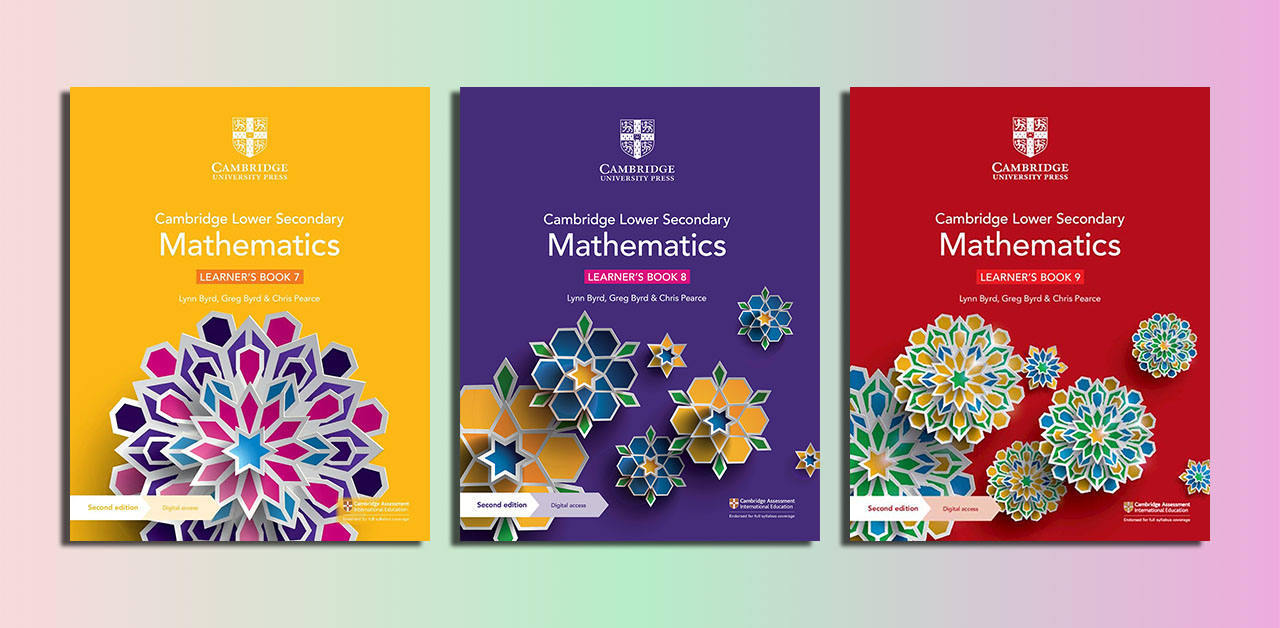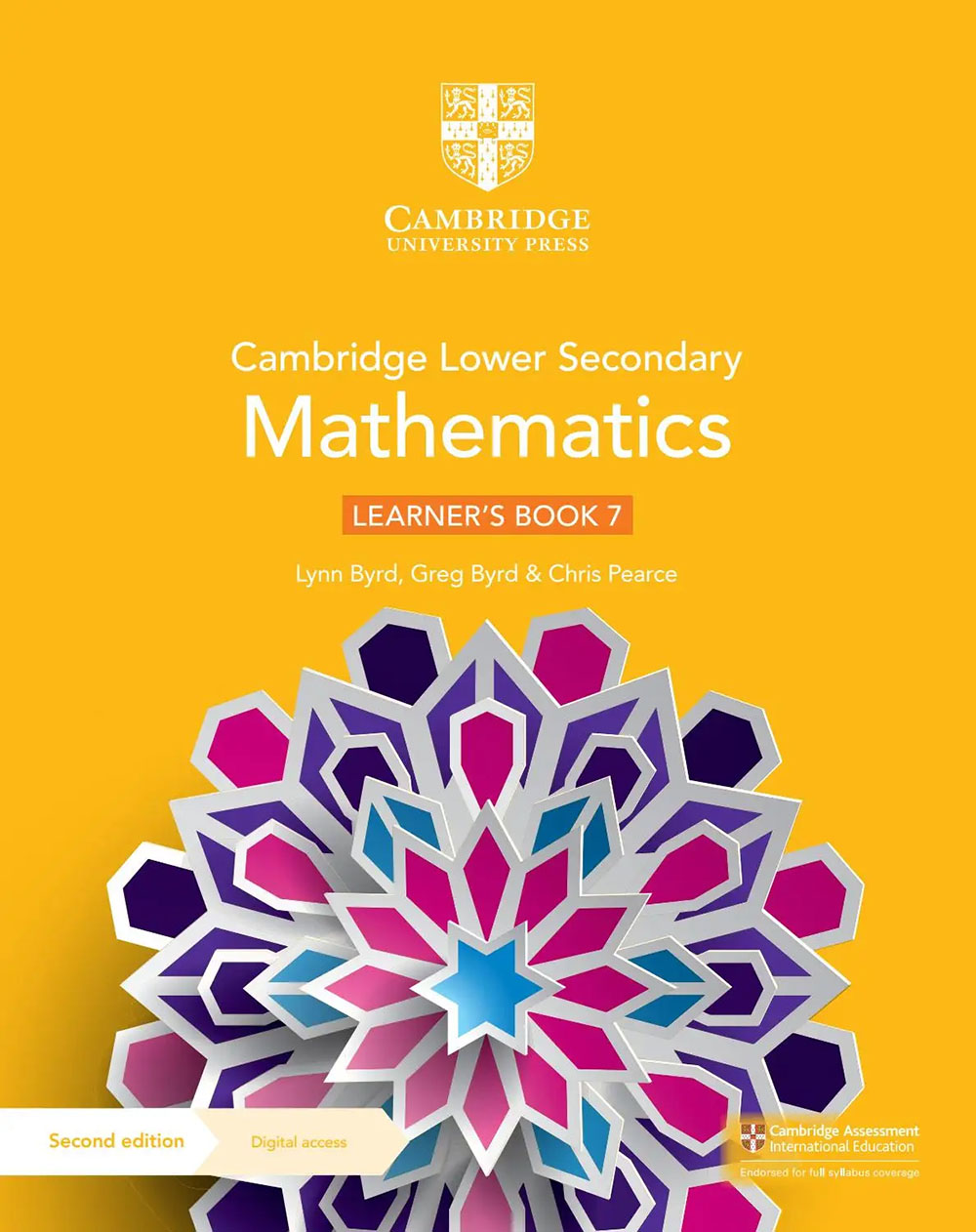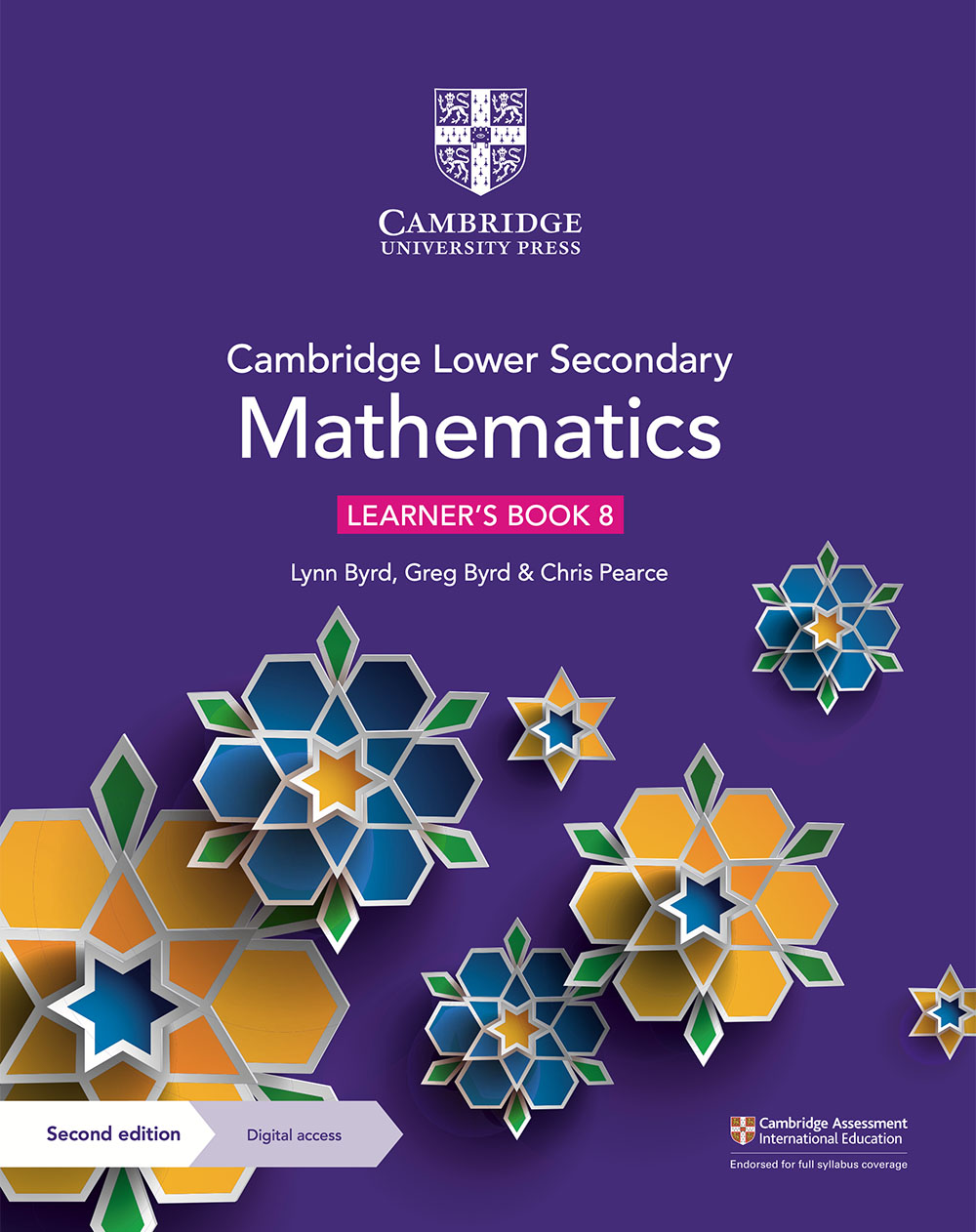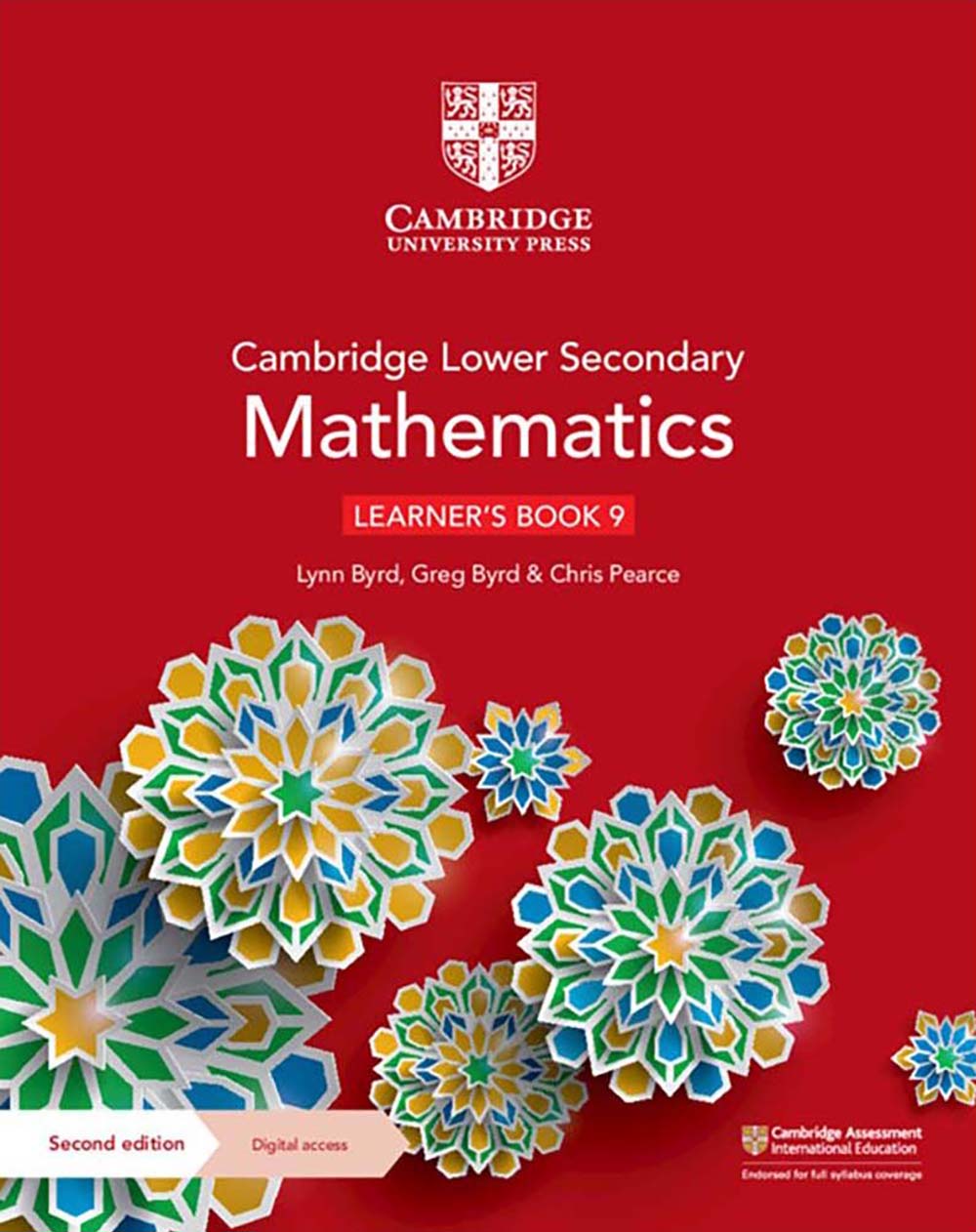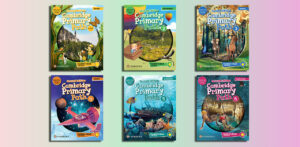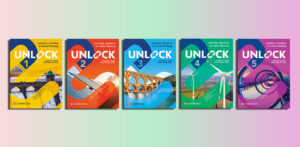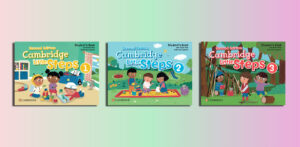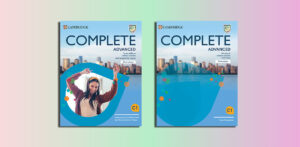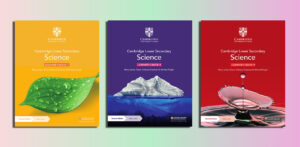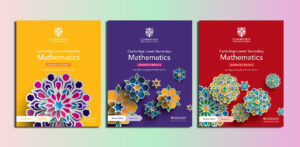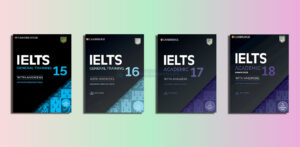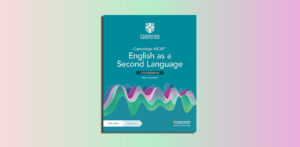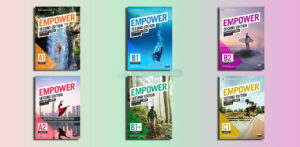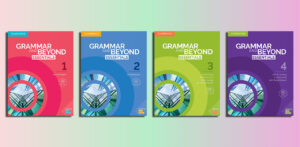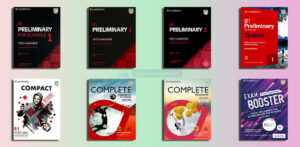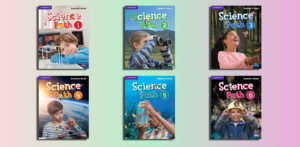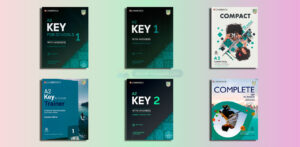Cambridge Lower Secondary Mathematics 2nd Edition (PDFs, Resources)
Level 7
Cambridge Lower Secondary Mathematics 2ed 7 Learner’s Book Answers.pdf
Cambridge Lower Secondary Mathematics 2ed 7 Learner’s Book.pdf – Sample: Click
Cambridge Lower Secondary Mathematics 2ed 7 Teacher’s Resource.pdf
Cambridge Lower Secondary Mathematics 2ed 7 Workbook Answers.pdf
Cambridge Lower Secondary Mathematics 2ed 7 Workbook.pdf – Sample: Click
Level 8
Cambridge Lower Secondary Mathematics 2ed 8 Learner’s Book Answers.pdf
Cambridge Lower Secondary Mathematics 2ed 8 Learner’s Book.pdf – Sample: Click
Cambridge Lower Secondary Mathematics 2ed 8 Workbook Answers.pdf
Cambridge Lower Secondary Mathematics 2ed 8 Workbook.pdf – Sample: Click
Level 9
Cambridge Lower Secondary Mathematics 2ed 9 Learner’s Book Answers.pdf
Cambridge Lower Secondary Mathematics 2ed 9 Learner’s Book.pdf – Sample: Click
Cambridge Lower Secondary Mathematics 2ed 9 Teacher’s Resource.pdf
Cambridge Lower Secondary Mathematics 2ed 9 Workbook Answers.pdf
Cambridge Lower Secondary Mathematics 2ed 9 Workbook.pdf – Sample: Click
Overview of the “Cambridge Lower Secondary Mathematics Second Edition” by Cambridge
Contents
- 1 Overview of the “Cambridge Lower Secondary Mathematics Second Edition” by Cambridge
- 2 Who is suitable for “Cambridge Lower Secondary Mathematics 2nd Edition”?
- 3 The benefits of “Cambridge Lower Secondary Mathematics Second Edition”
- 4 Effective learning strategies for “Cambridge Lower Secondary Mathematics Second Edition”
| ✅ Coursebook: | Cambridge Lower Secondary Mathematics 2nd Edition |
| ✅ Authors: | Lynn Byrd, Greg Byrd, Chris Pearce |
| ✅ Publisher: | Cambridge University Press |
| ✅ English type: | International English |
| ✅ For: | Mathematics, Secondary, Junior High School |
| ✅ Publication year: | 2021 |
What the series is
- It is a set of mathematics textbooks, workbooks and teacher-resources aimed at lower-secondary students (roughly ages 11-14) following the Cambridge Lower Secondary Mathematics Curriculum Framework 0862.
- The “2nd Edition” was published in 2021.
- The series covers multiple stages (Stage 7, 8, 9) of lower secondary, with Learner’s Books, Workbooks, Digital Access versions, and Teacher’s Resources.
- The content is built around four broad content areas: Number; Algebra; Geometry & Measures; Statistics & Probability.
Key features and structure
Here are some of the structural and pedagogical features that stand out:
- Each Learner’s Book is divided into units. For example, in Stage 9: Unit 1 “Number and calculation”, Unit 2 “Expressions and formulae”, Unit 3 “Decimals, percentages and rounding”, etc.
- Each unit typically begins with “What you will learn”, includes “Important words” (vocabulary support), step-by-step worked examples, then practice questions, and often a “Project” at the end of a unit or group of units (for deeper investigation).
- The books emphasise the idea of thinking and working mathematically. For example they highlight eight characteristics such as specialising, generalising, conjecturing, convincing, characterising, classifying, critiquing and improving.
- There is support for learners whose first language may not be English — the framework notes the series is “designed so that all students can succeed in mathematics regardless of their English language proficiency”.
- Digital access is included (e.g., “Digital Learner’s Book – 1 Year”) for some editions, supporting blended/online learning.
- The Teacher’s Resources provide detailed support: lesson plans, assessments, differentiation, digital materials.
Cambridge Lower Secondary Mathematics Learner’s Book 7 Second Edition
Who is suitable for “Cambridge Lower Secondary Mathematics 2nd Edition”?
The Cambridge Lower Secondary Mathematics Second Edition is designed for students aged 11–14 who are following the Cambridge Lower Secondary Mathematics curriculum (0862). It provides a clear progression pathway from Cambridge Primary Mathematics and prepares learners for Cambridge IGCSE or O Level Mathematics.
This series is ideal for:
- Students in international or bilingual schools using the Cambridge curriculum who want to build strong mathematical foundations and problem-solving skills.
- Learners transitioning to English-medium education, as the course uses clear, accessible language and offers support for English as a Second Language (ESL) students.
- Teachers seeking structured, ready-to-use materials, with detailed lesson plans, differentiated tasks, and digital resources that fit both classroom and online teaching.
- Schools aiming for continuity and global standards, since the series aligns with international benchmarks while allowing local adaptation.
In summary, it suits any lower secondary learner or educator looking for a comprehensive, concept-driven mathematics program that encourages reasoning, critical thinking, and confidence in problem-solving.
Cambridge Lower Secondary Mathematics Learner’s Book 8 Second Edition
The benefits of “Cambridge Lower Secondary Mathematics Second Edition”
Benefits for students
Builds mathematical thinking, not just procedures
- The series emphasises “thinking and working mathematically” — e.g., developing reasoning, discussion, conjecturing, generalising etc. AnyFlip+1
- It includes projects/investigations as part of units, so students engage with deeper, open tasks rather than purely rote exercises. AnyFlip+1
- The curriculum-framework mapping emphasises not only “what to do” (procedures) but “why and how” (conceptual understanding) and ability to apply. Cambridge International+1
Comprehensive practice and support
- Students get worked examples + lots of practice exercises to consolidate skills. Cambridge University Press & Assessment+1
- Clear structure in each unit: “What you will learn”, step-by-step, then exercises that link to topics; this helps learners see progression. AnyFlip
Support for English as Additional Language (EAL) / global learners
- Because this is a Cambridge International series designed for an international audience, the materials explicitly state that they support learners whose first language may not be English. Cambridge International+1
- Language worksheets, glossary, vocabulary support are embedded (especially in the teacher’s resource) which helps students who may struggle with English. Scribd
Clear progression across stages
- The series covers the lower-secondary range (Stages 7–9) aligning with the Cambridge Lower Secondary Mathematics Curriculum Framework, giving a coherent pathway for learners. Surabaya European School+1
- That means students have a predictable progression and can build on prior knowledge year by year.
Real-world and engaging contexts
- The units and projects include contexts that connect mathematics to real life (e.g., “cutting tablecloths”, “angle tangle”, etc) which helps motivation and relevance. AnyFlip+1
- Encouraging discussion, group work, exploration makes learning more active (versus passive). Scribd
Benefits for teachers / schools
Alignment with a recognised international curriculum
- The series is built to support the Cambridge Lower Secondary Mathematics curriculum (0862) and links to learning objectives within that framework. Cambridge International
- This means easier mapping for international schools or bilingual programmes using Cambridge.
Rich teacher support and resources
- The Teacher’s Resource provides lesson plans, scheme of work templates, diagnostic/mid/end-of-year tests, digital support. Scribd+1
- Differentiation advice, language support for learners with EAL, assessment for learning strategies are present — making it easier for teachers to scaffold different ability levels. Scribd
Blended learning / digital access ready
- The Learner’s Book mentions “Digital Access (1 Year)” and the teacher resources refer to downloadable materials and digital support. Cambridge University Press & Assessment+1
- This means schools can integrate print + digital, which helps flexibility especially in hybrid or online teaching situations.
Supports developing 21st-century skills
- The teacher’s resource emphasises active learning, metacognition, assessment for learning, peer/self assessment — skills that go beyond mathematics and support student autonomy and lifelong learning. Scribd
- For example, the “thinking and working mathematically” characteristics (conjecturing, convincing, generalising, improving) are skills beneficial for higher education and STEM-learning.
Cambridge Lower Secondary Mathematics Learner’s Book 9 Second Edition
Effective learning strategies for “Cambridge Lower Secondary Mathematics Second Edition”
Follow a structured progression
- Work through each unit in order since the series is carefully sequenced from Stages 7 to 9. Each topic builds on the previous one, so skipping ahead can create learning gaps.
Engage with “Thinking and Working Mathematically”
- The series promotes reasoning, conjecturing, and explaining solutions. Encourage students to verbalize their thought process, discuss multiple methods, and justify their answers rather than focusing only on final results.
Use worked examples actively
- Instead of reading examples passively, learners should copy them, highlight the key steps, and try similar problems immediately afterward. This reinforces procedural fluency and concept understanding.
Integrate real-life applications
- Many units include projects or investigations (e.g., “Angle Tangle” or “Cutting Tablecloths”). Completing these helps students see how mathematics connects to the real world and improves motivation.
Practice consistently with Workbooks
- The accompanying Workbook provides graded exercises. Regular use helps students master skills, while review questions at the end of each unit can be used for self-assessment.
Use digital resources
- Take advantage of digital access for interactive tasks, visual representations, and auto-marked quizzes. These tools offer immediate feedback and make abstract ideas more concrete.
Collaborate and discuss
- Small-group problem solving or peer explanation sessions can deepen conceptual understanding. When students explain ideas to classmates, they strengthen their own comprehension.
Review and reflect
- After each unit, learners should summarize key formulas, methods, and problem types. Teachers can use short reflection prompts like “What strategy worked best for me?” or “Which concept do I still find hard?”
Link language and mathematics
- For EAL learners, focus on mathematical vocabulary. Use glossaries, sentence frames (“I calculated this because…”) and visuals to support comprehension.
Apply formative assessment
- Teachers should use quick checks, quizzes, or exit tickets to gauge understanding and adapt instruction. The Teacher’s Resource offers diagnostic tests that help track progress and identify misconceptions early.


